 W
WGreat Britain was a leading Allied Power during the First World War of 1914–1918, fighting against the Central Powers, especially Germany. The armed forces were greatly expanded and reorganised—the war marked the founding of the Royal Air Force. The highly controversial introduction, in January 1916, of conscription for the first time in British history followed the raising of the largest all-volunteer army in history, known as Kitchener's Army, of more than 2,000,000 men. The outbreak of war was a socially unifying event. Enthusiasm was widespread in 1914, and was similar to that across Europe.
 W
WThe Clemenceau–Lloyd George Agreement of 1 December 1918 was a verbal agreement which modified the 1916 Sykes–Picot Agreement in respect to Palestine and the Mosul Vilayet. The latter component is also known as the Mosul cession. The agreement was between British and French Prime Ministers David Lloyd George and Georges Clemenceau, and took place at the French Embassy in London.
 W
WThe Admiral of Patrols was a former command appointment within the Admiralty during world war one usually held by a junior flag officer the post was established from 1912 to 1916.
 W
WThe Anglo-French Declaration was published by Great Britain and France, shortly after the Armistice of Mudros saw the capitulation of the Ottoman Empire. Some sources mention as publication date 7 November 1918, others 9 November 1918.
 W
WLiberal Prime Minister H. H. Asquith formed a wartime coalition government in May 1915.
 W
WThe Balfour Mission, also referred to as the Balfour Visit, was a formal diplomatic visit to the United States by the British Government during World War I, shortly after the United States declaration of war on Germany (1917).
 W
W"Blighty" is a British English slang term for Great Britain, or often specifically England. Though it was used throughout the 1800s in India to mean an English or British visitor, it was first used during the Boer War in the specific meaning of homeland for the English or British, and it was not until World War I that use of the term became widespread.
 W
WThe Board of Invention and Research (BIR) was a British expert-level committee, initiated by the Admiralty of the Royal Navy. Established in 1915, the board was responsible for soliciting expert scientific assistance to solve tactical and technical problems. It was a sister organisation to the Munitions Inventions Department which had been set up in April 1915 and the Air Inventions Committee (AIC), once it became become fully operational in the summer of 1917.
 W
WThe British Army during World War I fought the largest and most costly war in its long history. Unlike the French and German Armies, the British Army was made up exclusively of volunteers—as opposed to conscripts—at the beginning of the conflict. Furthermore, the British Army was considerably smaller than its French and German counterparts.
 W
WThe British cavalry were the first British Army units to see action during the First World War. Captain Hornby of the 4th Dragoon Guards is reputed to have been the first British soldier to kill a German soldier, using his sword, and Drummer Edward Thomas of the same regiment is reputed to have fired the first British shot shortly after 06:30 on 22 August 1914, near the Belgian village of Casteau. The following Battle of Mons was the first engagement fought by British soldiers in Western Europe since the Battle of Waterloo, ninety-nine years earlier. In the first year of the war in France nine cavalry brigades were formed for three British cavalry divisions. Other regiments served in six brigades of the two British Indian Army cavalry divisions that were formed for service on the Western Front. Three regiments also fought in the campaign in Mesopotamia, the only other theatre of the First World War where British cavalry served.
 W
WThe Central Committee on Women's Employment, later known as the Central Committee on Women’s Training and Employment, was an organisation set up in the United Kingdom during the First World War to provide employment for women, especially those who had become unemployed due to the War. In 1920, it became a standing committee in the House of Commons.
 W
WCharles H Roe was a Yorkshire coachbuilding company. It was for most of its life based at Crossgates Carriage Works, in Leeds.
 W
WChrist Church War Memorial Garden is a garden in Oxford, England, created in 1926 to commemorate the First World War.
 W
WCraiglockhart Hydropathic, now a part of Edinburgh Napier University and known as Craiglockhart Campus, is a building with surrounding grounds in Craiglockhart, Edinburgh, Scotland. As part of a large extension programme by the university in the early 2000s the original building and surrounding campus underwent significant restoration and modernisation as a result many of the original interior features of the building are no longer visible. The exterior of the building has been preserved.
 W
WDaimler Co Ltd v Continental Tyre and Rubber Co Ltd [1916] 2 AC 307 is a UK company law case, concerning the concept of "control" and enemy character of a company. It is usually discussed in the context of lifting the corporate veil, however it is merely an example of where the corporate veil is not in issue as a matter of company law, since the decision turns on correct interpretation of a statute.
 W
WThe Defence of the Realm Act (DORA) was passed in the United Kingdom on 8 August 1914, four days after it entered the First World War and was added to as the war progressed. It gave the government wide-ranging powers during the war, such as the power to requisition buildings or land needed for the war effort, or to make regulations creating criminal offences.
 W
WThe Diamond Troupe was the concert party of the 29th Division, a First World War infantry division within the British Army. Also known as the "Incomparable Division", the 29th was formed in 1915 by combining units that had previously been acting as garrisons about the British Empire. The division fought throughout the Gallipoli Campaign and, from 1916 to the end of the war, on the Western Front in France.
 W
WThe Dover Barrage was an underwater blockade of German submarines attempting to use the English Channel during World War I. The barrier consisted of minefields laid between Belgium and Dover at the outbreak of war, followed in February 1915 by steel netting anchored to the sea bed. The first stage of the barrage was completed in April 1915 and it was patrolled by ships of the Dover patrol.
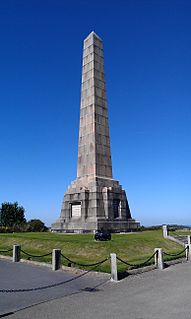 W
WThe Dover Patrol and later known as the Dover Patrol Force was a Royal Navy command of the First World War, notable for its involvement in the Zeebrugge Raid on 22 April 1918. The Dover Patrol formed a discrete unit of the Royal Navy based at Dover and Dunkirk for the duration of the First World War. Its primary task was to prevent enemy German shipping—chiefly submarines—from entering the English Channel en route to the Atlantic Ocean, thereby obliging the Imperial German Navy to travel via the much longer route around Scotland which was itself covered by the Northern Patrol.
 W
WErskine is a Veterans care charity in Erskine, Renfrewshire, Scotland. It provides long-term nursing, respite, dementia and end-of-life medical care for veterans of the British Armed Forces who have settled in Scotland. The charity also provides a range of individual and family accommodation and Veterans Activity Centres. The charity opened and established itself as Princess Louise Scottish Hospital for Limbless Sailors and Soldiers in 1916. Its name was then shortened to Erskine Hospital and then simply "Erskine" in later years. It was opened due to the need to treat the thousands of military personnel who lost their limbs in the First World War. The charity has gone on to offer help to British veterans of the First World War and every subsequent war. It has gone on to become the biggest ex-services facility in the country.
 W
WGuy Motors was a Wolverhampton-based vehicle manufacturer that produced cars, lorries, buses and trolleybuses. The company was founded by Sydney S. Guy (1885–1971) who was born in Kings Heath, Birmingham. Guy Motors operated out of its Fallings Park factory from 1914 to 1982, playing an important role in the development of the British motor industry.
 W
WThe History of the Great War Based on Official Documents by Direction of the Committee of Imperial Defence is a series of 109 volumes, concerning the war effort of the British state during the First World War. It was produced by the Historical Section of the Committee of Imperial Defence from 1915 to 1949; after 1919 Brigadier-General Sir James Edmonds was Director. Edmonds wrote many of the army volumes and influenced the choice of historians for the navy, air force, medical and veterinary volumes. Work had begun on the series in 1915 and in 1920, the first volumes of Naval Operations and Seaborne Trade, were published. The first "army" publication, Military Operations: France and Belgium 1914 Part I and a separate map case were published in 1922 and the final volume, The Occupation of Constantinople was published in 2010.
 W
WHoward & Bullough was a firm of textile machine manufacturers in Accrington, Lancashire. The company was the world's major manufacturer of power looms in the 1860s.
 W
WJ.L. Thompson and Sons was a shipyard on the River Wear, Sunderland, which produced ships from the mid-18th century until the 1980s. The world-famous Liberty Ship was among the designs to be created, produced and manufactured at the yard's base at North Sands.
 W
WThe New Army, often referred to as Kitchener's Army or, disparagingly, as Kitchener's Mob, was an (initially) all-volunteer army of the British Army formed in the United Kingdom from 1914 onwards following the outbreak of hostilities in the First World War in late July 1914. It originated on the recommendation of Herbert Kitchener, then the Secretary of State for War to raise 500,000 volunteers. Kitchener's original intention was that it would be formed and ready to be put into action in mid-1916, but circumstances dictated its use before then. The first use in a major action came at the Battle of Loos.
 W
W"The lamps are going out all over Europe, we shall not see them lit again in our life-time", British Foreign Secretary Sir Edward Grey remarked to a friend on the eve of the United Kingdom's entry into the First World War. First published in Grey's memoirs in 1925, the statement earned wide attention as an accurate perception of the First World War and its geopolitical and cultural consequences.
 W
WThis is a list of pals battalions of the British Army during the First World War. Pre-war Territorial Force (T.F.) battalions have not been included, although they too usually recruited from a specific area or occupation. The 69 line infantry regiments formed 142 locally raised battalions and 68 local reserve battalions. The Guards Regiments and the regiments formed only from Territorial Force battalions did not form pals battalions.
 W
WLiberal David Lloyd George formed a coalition government in the United Kingdom in December 1916, and was appointed Prime Minister of the United Kingdom by King George V. It replaced the earlier wartime coalition under H. H. Asquith, which had been held responsible for losses during the Great War. Those Liberals who continued to support Asquith served as the Official Opposition. The government continued in power after the end of the war in 1918, though Lloyd George was increasingly reliant on the Conservatives for support. After several scandals including allegations of the sale of honours, the Conservatives withdrew their support after a meeting at the Carlton Club in 1922, and Bonar Law formed a government.
 W
WThe Low Moor Explosion was a fire and a series of explosions at a munitions factory in Low Moor, Bradford, West Riding of Yorkshire in August 1916. The factory was manufacturing picric acid to be used as an explosive for the First World War effort and was well alight when the Bradford Fire Brigade arrived. A massive explosion and a series of smaller ones killed 40 people including on-site workers, a railwayman and six firemen who had attended the fire from the Odsal and Nelson Street fire stations.
 W
WMetro-Cammell, fully the Metropolitan Cammell Carriage and Wagon Company (MCCW) was an English manufacturer of railway carriages, locomotives and railway wagons, based in Saltley and subsequently Washwood Heath in Birmingham. Purchased by GEC Alstom in May 1989, the factory was closed by its eventual owner Alstom in 2005.
 W
WThe Military Service Act 1916 was an Act passed by the Parliament of the United Kingdom during the First World War.
 W
WThe Ministry of Information (MOI), headed by the Minister of Information, was a United Kingdom government department created briefly at the end of the First World War and again during the Second World War. Located in Senate House at the University of London during the 1940s, it was the central government department responsible for publicity and propaganda.
 W
WMunitionettes were British women employed in munitions factories during the time of the First World War.
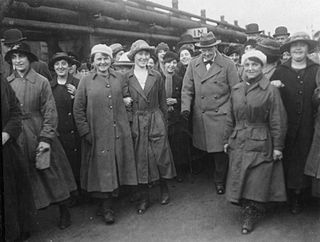 W
WThe National Filling Factory, Georgetown, was a First World War munitions factory situated near Houston in Renfrewshire, Scotland. It is believed that the Ministry of Munitions owned up to 12 filling factories; Georgetown was known as NFF.4.
 W
WThe National Shell Filling Factory, Chilwell, was a World War I United Kingdom Government-owned explosives Filling Factory. Its formal title was National Filling Factory No. 6. It was located near Chilwell, at that time a village, in Nottinghamshire on the main road from Nottingham to Ashby de la Zouch. During the Great War it filled some 19 million shells with high explosives.
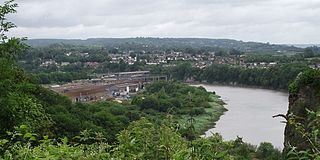 W
WThe National Shipyards, in the United Kingdom, were an initiative to expand merchant ship production during the First World War, proposed and partially completed by the coalition government led by David Lloyd George.
 W
WThe New Birmingham Orchestra, sometimes called simply the Birmingham Orchestra, was a professional symphony orchestra established by Thomas Beecham and based in Birmingham, England between 1917 and 1919. Although it was short-lived, it was succeeded the year after its dissolution by what is now the City of Birmingham Symphony Orchestra, which was run in its early days by many of the same individuals.
 W
WA Nissen hut is a prefabricated steel structure for military use, especially as barracks, made from a half-cylindrical skin of corrugated iron. Designed during the First World War by the American-born, Canadian-British engineer and inventor Major Peter Norman Nissen, it was used also extensively during the Second World War and adapted to the similar Quonset hut in the United States.
 W
WThe Passage of the Grande Honnelle was a battle between troops of the British First and Third Armies and German Empire forces during the Hundred Days Offensive of the First World War. The action took place in and around the Belgian municipality of Honnelles, between 5 and 7 November 1918.
 W
WThe Railway Operating Division (ROD) was a division of the Royal Engineers formed in 1915 to operate railways in the many theatres of the First World War. It was largely composed of railway employees and operated both standard gauge and narrow gauge railways.
 W
WAt the beginning of 1914 the British Army had a reported strength of 710,000 men including reserves, of which around 80,000 were regular troops ready for war. By the end of the First World War almost 1 in 4 of the total male population of the United Kingdom of Great Britain and Ireland had joined up, over five million men. Of these men, 2.67 million joined as Volunteers and 2.77 million as conscripts. Monthly recruiting rates for the army varied dramatically.
 W
WRoom 40, also known as 40 O.B. was the cryptanalysis section of the British Admiralty during the First World War.
 W
WThe Royal Naval Patrol Service (RNPS) was a branch of the Royal Navy active during both the First and Second World Wars. The RNPS operated many small auxiliary vessels such as naval trawlers for anti-submarine and minesweeping operations to protect coastal Britain and convoys.
 W
WThe Scottish Women's Hospital at Royaumont was a medical hospital during World War I active from January 1915 to March 1919 operated by Scottish Women's Hospitals (SWH), under the direction of the French Red Cross and located at Royaumont Abbey. The Abbey is a former Cistercian abbey, located near Asnières-sur-Oise in Val-d'Oise, approximately 30 km north of Paris, France. The hospital was started by Dr Frances Ivens and founder of SWH, Dr Elsie Maud Inglis. It was especially noted for its performance treating soldiers involved in the Battle of the Somme.
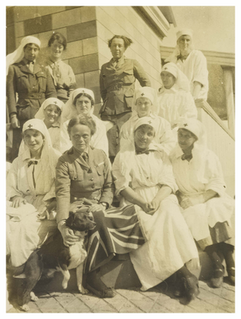 W
WThe Scottish Women's Hospitals for Foreign Services (SWH) was founded in 1914. They were led by Dr. Elsie Inglis and provided nurses, doctors, ambulance drivers, cooks and orderlies. By the end of World War I 14 medical units had been outfitted and sent to serve in Corsica, France, Malta, Romania, Russia, Salonika and Serbia.
 W
WThe Shell Crisis of 1915 was a shortage of artillery shells on the front lines in the First World War that led to a political crisis in the United Kingdom. The military historian Hew Strachan wrote that military strategy led an over-reliance on shrapnel to attack infantry in the open, which was negated by the resort to trench warfare, for which high-explosive shells were better suited. At the start of the war there was a revolution in doctrine: instead of the idea that artillery was a useful support for infantry attacks, the new doctrine held that heavy guns alone would control the battlefield. Because of the stable lines on the Western Front, it was easy to build railway lines that delivered all the shells the factories could produce. The "shell scandal" emerged in 1915 because the high rate of fire over a long period was not anticipated and the stock of shells became depleted.
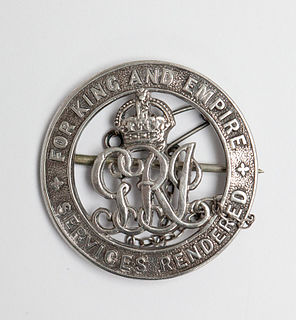 W
WThe Silver War Badge was issued in the United Kingdom and the British Empire to service personnel who had been honourably discharged due to wounds or sickness from military service in World War I. The badge, sometimes known as the "Discharge Badge", the "Wound Badge" or "Services Rendered Badge", was first issued in September 1916, along with an official certificate of entitlement.
 W
WSunbeam Motor Car Company Limited was a British motor car manufacturer with its works at Moorfields in Blakenhall, a suburb of Wolverhampton in the county of Staffordshire, now West Midlands. Its Sunbeam name had been registered by John Marston in 1888 for his bicycle manufacturing business. Sunbeam motor car manufacture began in 1901. The motor business was sold to a newly incorporated Sunbeam Motor Car Company Limited in 1905 to separate it from Marston's pedal bicycle business; Sunbeam motorcycles were not made until 1912.
 W
WThe Sykes–Picot Agreement was a 1916 secret treaty between the United Kingdom and France, with assent from the Russian Empire and the Kingdom of Italy, to define their mutually agreed spheres of influence and control in an eventual partition of the Ottoman Empire.
 W
WTank Banks was the name given to a World War I fund raising campaign by the British Government. Six Mark IV make tanks toured the towns and cities of England, Scotland and Wales, the primary purpose of the campaign was to promote the sale of government War Bonds and War Savings Certificates.
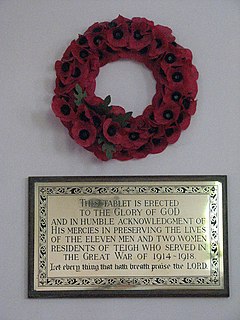 W
WThankful Villages are settlements in England and Wales from which all their members of the armed forces survived World War I. The term Thankful Village was popularised by the writer Arthur Mee in the 1930s; in Enchanted Land (1936), the introductory volume to The King's England series of guides, he wrote that a Thankful Village was one which had lost no men in the Great War because all those who left to serve came home again. His initial list identified 32 villages. There are tens of thousands of villages and towns in the United Kingdom.
 W
WThe Titles Deprivation Act 1917 is an Act of Parliament of the United Kingdom which authorised enemies of the United Kingdom during the First World War to be deprived of their British peerages and royal titles.
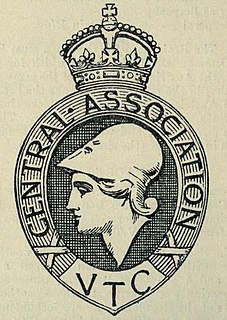 W
WThe Volunteer Training Corps was a voluntary home defence militia in the United Kingdom during World War I.
 W
WWashwood Heath is a ward in Birmingham, within the formal district of Hodge Hill, roughly two miles north-east of Birmingham city centre, England. Washwood Heath covers the areas of Birmingham that lie between Nechells, Bordesley Green, Stechford and Hodge Hill.
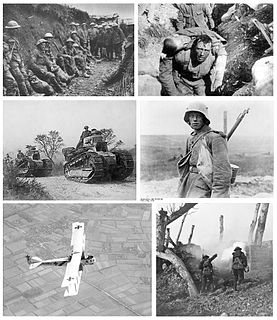 W
WThe Western Front was the main theatre of war during the First World War. Following the outbreak of war in August 1914, the German Army opened the Western Front by invading Luxembourg and Belgium, then gaining military control of important industrial regions in France. The German advance was halted with the Battle of the Marne. Following the Race to the Sea, both sides dug in along a meandering line of fortified trenches, stretching from the North Sea to the Swiss frontier with France, which changed little except during early 1917 and in 1918.
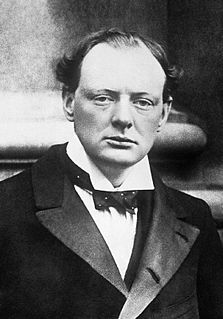 W
WWinston Churchill was first elected to the UK Parliament at the 1900 general election as one of two Conservative Party members representing the Oldham constituency. He took his seat in the House of Commons in February 1901 but soon became critical of the Conservative government on a number of issues. On 31 May 1904, he formally crossed the floor of the Commons to join the opposition Liberals, remaining a party member until March 1924.
 W
WWolseley Motors Limited was a British motor vehicle manufacturer founded in early 1901 by the Vickers armaments combine in conjunction with Herbert Austin. It initially made a full range, topped by large luxury cars, and dominated the market in the Edwardian era. The Vickers brothers died and, without their guidance, Wolseley expanded rapidly after the war, manufacturing 12,000 cars in 1921, and remained the biggest motor manufacturer in Britain.
 W
WThe Women's Land Army (WLA) was a British civilian organisation. It was created in 1915 by the Board of Agriculture during World War I so women could work in agriculture, replacing men called up to the military. Women who worked for the WLA were commonly known as Land Girls. In effect the Land Army operated to place women with farms that needed workers, the farmers being their employers. They picked crops and did all the jobs that the men would do. Notable members included the archaeologist Lily Chitty and the botanist Ethel Thomas. It was disbanded in 1919 but revived in June 1939 under the same name.